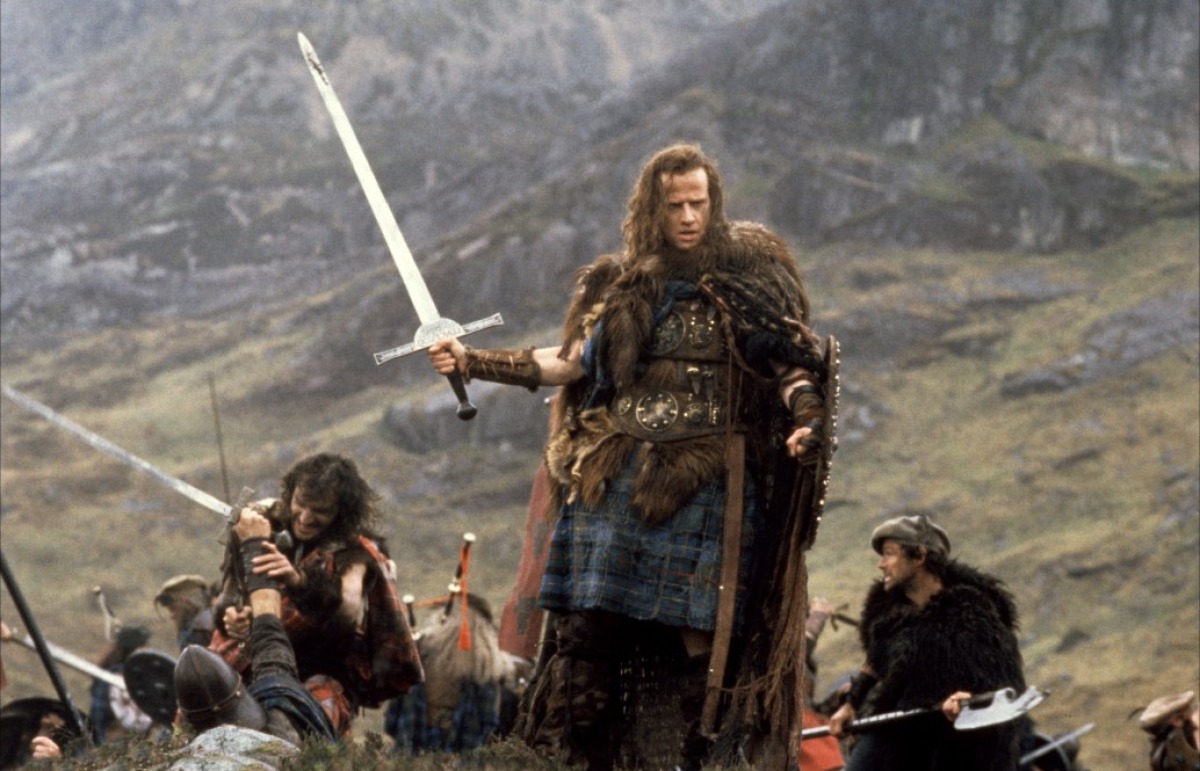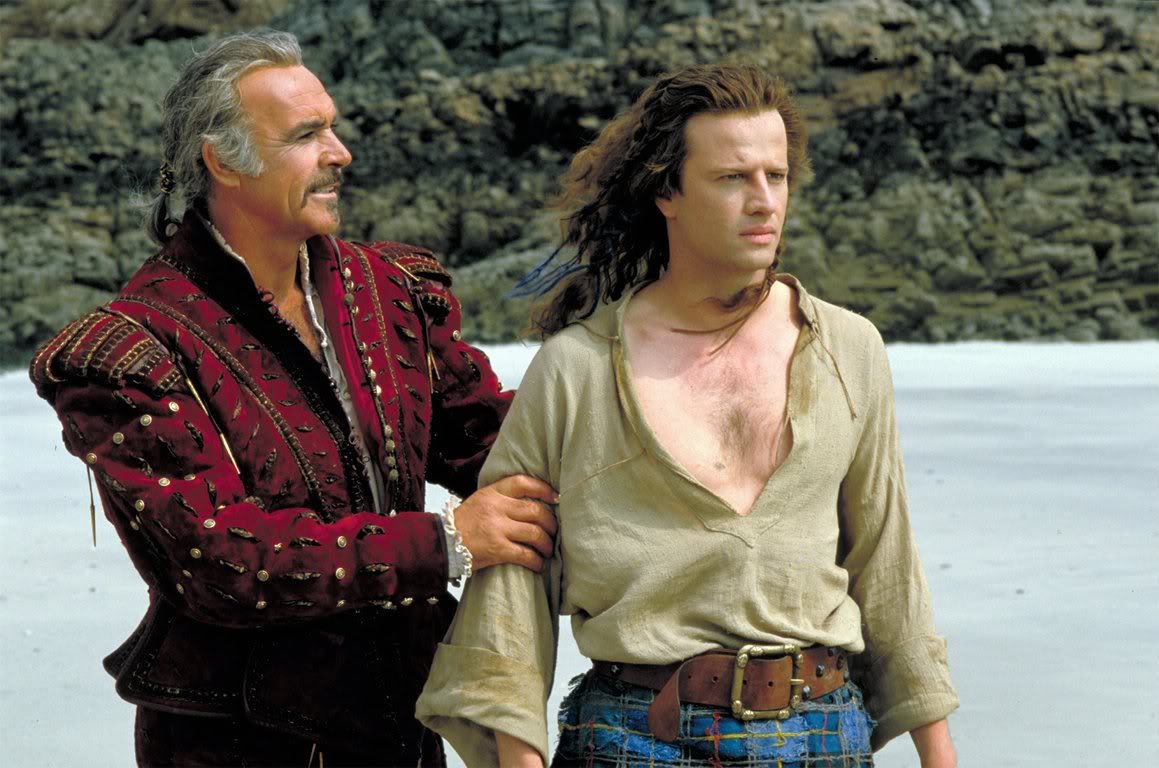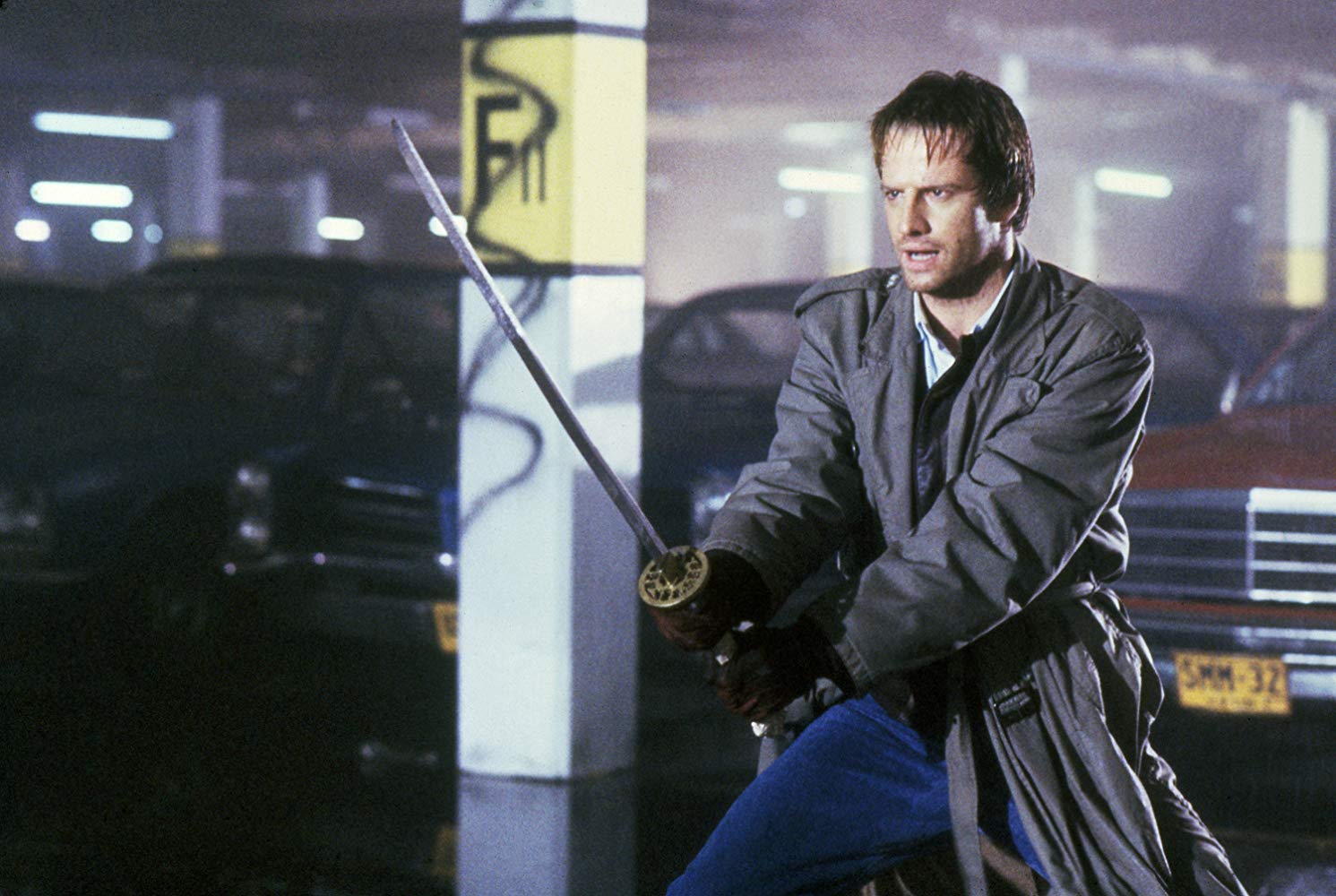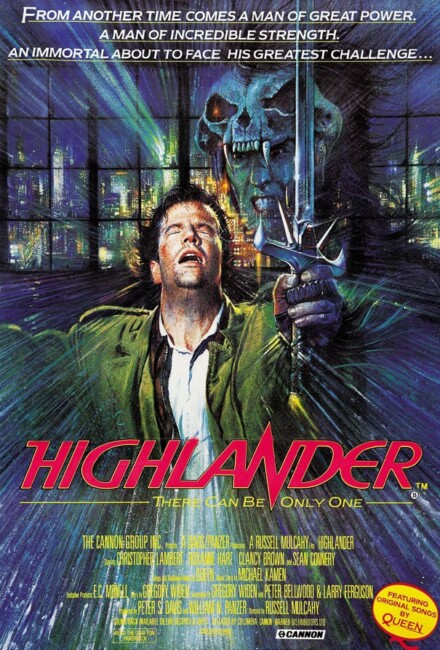UK. 1986.
Crew
Director – Russell Mulcahy, Screenplay – Peter Bellwood, Larry Ferguson & Gregory Widen, Story – Gregory Widen, Producers – Peter S. Davis & William N. Panzer, Photography – Gerry Fisher, Music – Michael Kamen, Songs – Queen, Special Effects – Martin Gutteridge, Makeup – Bob Keen & Nick Maley, Production Design – Allan Cameron. Production Company – Davis-Panzer.
Cast
Christopher Lambert (Conner McLeod), Roxanne Hart (Brenda Wyatt), Clancy Brown (The Kurgan), Sean Connery (Juan Ramirez), Beatie Edney (Heather), Sheila Gish (Rachel Ellenstein)
Plot
In present-day New York, two races of immortals, one on the side of good, one evil, close in for the last moments in a secret war that has lasted across the ages. They cannot be killed except by decapitation so their duels are fought one-to-one with swords. Slowly the numbers have dwindled until only two remain – Conner McLeod, a sixteenth century Scottish Highlander, and The Kurgan, a crazed Immortal from the Russian steppes. McLeod and The Kurgan now enter a fight from which only one will emerge the victor to claim The Prize, a gift of unimaginable power that will cast the world into either eternal good or eternal evil depending on who wins.
Highlander came out with the promo line “There can be only one.” As the film was spun out into a major franchise in the ensuing decade-and-a-half, it is a claim that has proven untrue. Of course, things did not look that way in 1986 when Highlander appeared on the scene and proved a captivating and original film and a success with the public.
Highlander was directed by Russell Mulcahy, one of the hottest of the generation of directors to emerge from the MTV training grounds. Indeed, Russell Mulcahy directed the first videoclip that MTV ever aired in 1981 and made such artistically cutting edge clips such as Bonnie Tyler’s Total Eclipse of the Heart (1983) and Billy Joel’s Pressure (1982), as well the dazzling videos that became the signature trademark for Duran Duran. Mulcahy debuted as film director with Razorback (1984), an excellent Jaws (1975) copy made in his native Australia, which still remains Mulcahy’s best film. Highlander, his second film, was Mulcahy’s entry into the Hollywood mainstream. (See below for Russell Mulcahy’s body of other genre films).
Highlander is made with a refreshing imagination. It is a script that, for all that the various sequels and tv series’ have attempted to wring blood from the premise, had an original idea and was uniquely different to anything that had been made before. Christopher Lambert had entered the international stage with the title role in Greystoke: The Legend of Tarzan, Lord of the Apes (1984) and subsequent to this became a B action movie lead. With Neanderthal brow, crosseyes and guttural accent, Lambert seems an odd choice for a sex symbol, but he does bring an infectious charisma to the role of Connor McLeod, even if little in the way of real acting talent. The scene-stealer film proves to be Clancy Brown, prowling through the film with a wolfish smile, turning the kiss of a priest’s hand into the licking of his entire arm and one grotesquely funny sequence driving a car into the traffic the wrong way.

It is a film made with a visual brashness by a director who is determined to imprint his visual stamp and make something exciting. Russell Mulcahy’s MTV imprint is evident from the moment that Highlander opens in a dazzling sequence that takes the breath away – a fluid Louma crane shots that swoops across a semi-darkened wrestling arena to close in on Christopher Lambert’s face lit up by banks of video screens; a swordfight in an underground car park with the combatants dancing across car hoods illuminated in the rain from a sprinkler system, and shots reflected off a fallen pair of mirrorshades. Alas, nothing else in the film matches such a bravura opening – even the mid-air finale seems an anti-climax in comparison. Nevertheless, Mulcahy fills the film with dazzling shots circling Christopher Lambert and Sean Connery on mountainsides, inventive visual cuts between eras and lots of 80s backlit mist.
If Highlander has problems it is that Russell Mulcahy treats it with too broad a sense of humour – a scene with Clancy Brown facing a Vietnam vet or the kidnapping of a geriatric couple in their car end up almost as burlesque. Often, Mulcahy seems not to know when to quit, having to demolish entire buildings with every duel or blow up everything in the vicinity every time an Immortal dies.
Highlander was a success and subsequently gave birth to an number of spinoffs. In the 1990s, Highlander became a franchise with five film sequels, three tv series spinoffs and a series of original novelizations (see below for which). Unfortunately, the more the franchise attempted to spin the idea out, the more the concept was spread thin. The script here has an intriguing and original idea – a secret war of Immortals throughout the ages – but the writers explain little about it. Highlander was sufficiently original so long as you never asked too much about the bits that it never deigned to explain. We never know how the war came about, why some people become Immortal as opposed to others, why the Immortals regard churches as hallowed ground, why they can only be killed by decapitation or why a samurai sword was made several hundred years before it was meant to be.

The first film gets away with it because of the novelty of the concept and the sheer kinesis of Russell Mulcahy’s direction. By the time of the various sequels and tv series (none of which offered any type of explanation for this situation), the basic premise of the series started to look more and more like a house of cards built in mid-air. All the focus was on sword battles and handsome stars – and that ended up being the sole appeal of the Highlander series.
Alas, more than most other films, Highlander is not a story that lends itself to sequels – the film ends with every Immortal except Christopher Lambert killed off and he winning The Prize, which gives him the ability to influence the thoughts of world leaders’ for the good. A sequel’s duty is to top what happened in the preceding entry but this is a show capper that is hard to follow. As a result, the Highlander sequels and tv series are conceptually vacant. The two live-action tv series even have to conveniently forget the fact that according to this film Conner McLeod is the only survivor and that their various lead stars are going to have to die.
The Highlander sequels are:– the atrocious Highlander II: The Quickening (1991), also directed by Russell Mulcahy, which tries to explain that Connor McLeod and Juan Ramirez are aliens and is surely one of the worst movies ever made; Highlander III: The Sorceror/Highlander III: The Final Dimension/Highlander III: The Magician (1994); Highlander: Endgame (2000), which unites the film and the first tv series; Highlander: The Source (2007) now featuring Adrian Paul; and the anime film Highlander: The Search for Vengeance (2007). The tv series were Highlander (1992-97), which featured Adrian Paul as Christopher Lambert’s descendant; Highlander: The Animated Series (1994-5), a near-incoherent cartoon version set in a post-holocaust world; and Highlander: The Raven (1998-9), which featured Elizabeth Gracen as an Immortal thief. A remake of the original has also been announced throughout the 00s.

Russell Mulcahy is a director whose work frequently falls within the genre. He has made a number of other films but never quite fulfilled the visual promise of earlier works like Razorback and Highlander. Indeed, his tv and film work of the 2000s seems to display a disinterest in stylism and Mulcahy simply have signed on for a paycheque.
Russell Mulcahy’s other films of interest have been:– the killer boar saga Razorback (1984); Ricochet (1991), a psycho-thriller about an ex-con seeking revenge; the superhero film The Shadow (1994); Talos the Mummy/Tale of the Mummy (1998); the serial killer thriller Resurrection (1999); the tv mini-series remake of On the Beach (2000); the tv mini-series remake of Jules Verne’s Mysterious Island (2005); the adventure tv mini-series The Curse of King Tut’s Tomb (2006); Resident Evil: Extinction (2007); and The Scorpion King: Rise of a Warrior (2008). Mulcahy also wrote/produced the killer shark film Bait (2012). Screenwriter Gregory Widen would go onto write and direct the excellent The Prophecy (1995) about warring angels, which was also later spun out into a film series, and the SF film OtherLife (2017).
Trailer here

